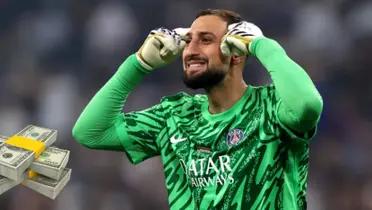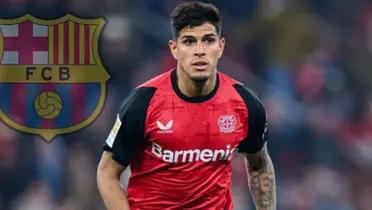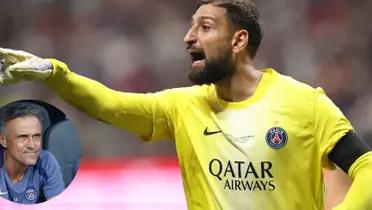How much did Neymar earn when he was 17, and what does Endrick earn now?
Discover the sums awarded by the world's biggest clubs to these young stars

Santos FC’s recent decision to shutter its women's and futsal teams has sent shockwaves through the football world, underscoring a stark reality: the widening economic disparity between large and small clubs, and the profound impact this has on the sport's development.
Neymar's Case: During his stint at Santos, Neymar commanded an estimated annual salary of $20 million. For a club of Santos' stature, this figure was astronomical, eventually becoming an unsustainable burden. The decision to invest such a substantial portion of the club's resources in a single player, while strategically sound from a commercial standpoint, had far-reaching negative consequences. The club was compelled to make drastic cuts, including the dissolution of their women’s and futsal teams. This instance vividly illustrates how a solitary player can significantly imbalance a club's finances.
Endrick's Signing: On the flip side, the young Brazilian prodigy, Endrick, secured a contract with Real Madrid extending until 2030. While his exact salary for the initial three years of his contract remains undisclosed, from 2027 onward, he will earn a gross annual salary of €2 million. This translates to a total of €6 million gross between 2027 and 2030. Although this figure falls short of Neymar's peak earnings, it's still exceptionally high for a player of his age and reflects the escalating inflation in the transfer market.
The Broader Implications:
- Economic Inequality: The widening wage gap between football's behemoths and smaller clubs fosters greater inequality, making it increasingly challenging for smaller teams to compete effectively and limiting their aspirations of winning major titles.
- Undermining Sporting Projects: Santos' decision to dismantle its women's and futsal teams serves as a stark reminder of how the pursuit of short-term success can lead to the erosion of long-term sporting projects.
- Pressure on Young Talents: Young prodigies like Endrick face immense pressure to live up to the heightened expectations surrounding them. This can adversely affect their development both as footballers and as individuals.
- Distorted Transfer Market: The inflated prices in the transfer market make it increasingly difficult for smaller clubs to compete for top talent.
Addressing the Issue:
- Financial Regulations: Stricter regulations on salary caps and transfer spending are imperative to ensure a more level playing field.
- Investing in Youth Academies: Clubs should prioritize investing in their youth academies to reduce their reliance on expensive transfers and nurture homegrown talent.
- Inter-Club Collaboration: Fostering cooperation among clubs, both domestically and internationally, is crucial for sharing resources and knowledge.
- Enhanced Transparency: Clubs should be more transparent about their financial dealings to prevent opaque practices and ensure funds are allocated responsibly.
Additional Considerations:
- Fan Impact: The dissolution of teams like Santos' women's and futsal squads directly impacts fans who enjoy these sports and follow the development of young talents.
- Agent Influence: Football agents play a pivotal role in negotiating contracts and can significantly influence the escalation of salaries.
- Federations' Role: Football federations have a crucial role in regulating the transfer market and promoting a fairer and more equitable game.
More news

THE GANG IS HERE! First Argentine Stars Arrive in Buenos Aires for Final Qualifier Push!
01/09/2025

THE LAST DANCE! Lionel Messi Confirms His Final World Cup Qualifier in Argentina!
29/08/2025

TRANSFER COLLAPSES! Julio Enciso Fails Medical Exams, Returns to Brighton!
27/08/2025

HERE WE GO! Piero Hincapié Says YES to Arsenal, Club Prepares Final Bid for Leverkusen Star!
26/08/2025

SOUTH AMERICAN SHAME: Independiente vs. U. de Chile Match Canceled After Horrific Incidents!
21/08/2025

PARIS IN PARIS! The New Superclub, Paris FC, Rises to Threaten PSG-Marseille Rivalry!
20/08/2025

PSG’s €850M Budget is 30x Larger Than the Smallest in Ligue 1!
19/08/2025

THE DEBUTS ARE HERE! Estupiñán & Modrić Step Onto the San Siro Stage!
18/08/2025

CONTROVERSY IGNITES! Barcelona Opens Season with a Contested 2-0 Victory Over Mallorca!
18/08/2025

SCANDAL ESCALATES: Donnarumma's Harsh Letter Responds to Luis Enrique's Super Cup Snub!
15/08/2025

HISTORY MADE! PSG Wins First-Ever Super Cup Title in Thrilling Penalty Shootout!
14/08/2025

Mastantuono Arrives at Valdebebas for Real Madrid Presentation
13/08/2025

ON AND OFF THE PITCH: Is Nicki Nicole the New WAG of Barcelona's Lamine Yamal?
13/08/2025

Donnarumma Bids Farewell to Paris Saint-Germain at the Peak of His Career
13/08/2025

THE ULTIMATUM: PSG Puts Donnarumma on the Transfer Market for a Bargain Price!
13/08/2025

MONEY TALKS? Barça's Salary Offer Could Lure Hincapié from Leverkusen!
12/08/2025

SHOCK SNUB! Donnarumma Left Out of Super Cup Squad, Fuelling PSG Exit Rumors!
12/08/2025

Fede Valverde didn't go to the friendly match against WSG to recover
12/08/2025



